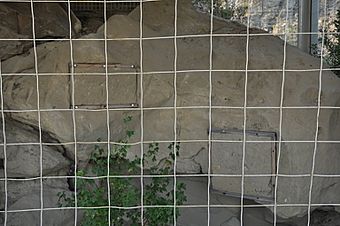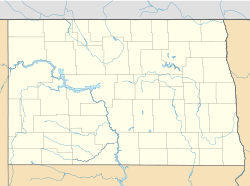Initial Rock facts for kids
|
Initial Rock
|
|
|
U.S. Historic district
Contributing property |
|
 |
|
| Nearest city | Medora, North Dakota |
|---|---|
| Area | 9.9 acres (4.0 ha) |
| Built | 1876 |
| Part of | Custer Military Trail Historic Archaeological District (ID08001293) |
| NRHP reference No. | 76002271 |
Quick facts for kids Significant dates |
|
| Added to NRHP | November 7, 1976 |
| Designated CP | June 5, 2009 |
Initial Rock, also known as Name Rock, is a special place near Medora, North Dakota. It's located in the Medora Ranger District of the Little Missouri National Grassland. This historic spot was added to the National Register of Historic Places (NRHP) in 1976. The NRHP is a list of places in the United States that are important to history.
Initial Rock was once an overnight camp for soldiers led by George Armstrong Custer. This happened on May 28, 1876. The soldiers were on their way to a big battle called the Battle of the Little Bighorn. This famous battle took place about a month later, on June 25, 1876.
Contents
What Makes Initial Rock Special?
Initial Rock is important because of what happened there in 1876. It shows us a piece of history from the Great Sioux War. The site covers about 9.9 acres, which is like nine football fields.
Soldiers' Names on the Rock
Two soldiers, W.C. Williams and F. Neely, carved their names into a rock at the site. This rock is still there today! These soldiers were part of a group led by Marcus Reno. Both Williams and Neely survived the Battle of the Little Bighorn. Their names on the rock are a lasting reminder of their journey.
Protecting the Historic Rock
Since 1966, a special shelter has been built over the rock. This shelter helps protect the carvings from bad weather. It also stops people from damaging the rock. This way, the names carved by the soldiers can be preserved for many more years.
Part of a Bigger Historic Area
Initial Rock is one of five important places that make up the Custer Military Trail Historic Archaeological District. This larger historic area was added to the National Register of Historic Places in 2009. These five sites are part of a driving tour. This tour lets people explore the path Custer's soldiers took through the region.



